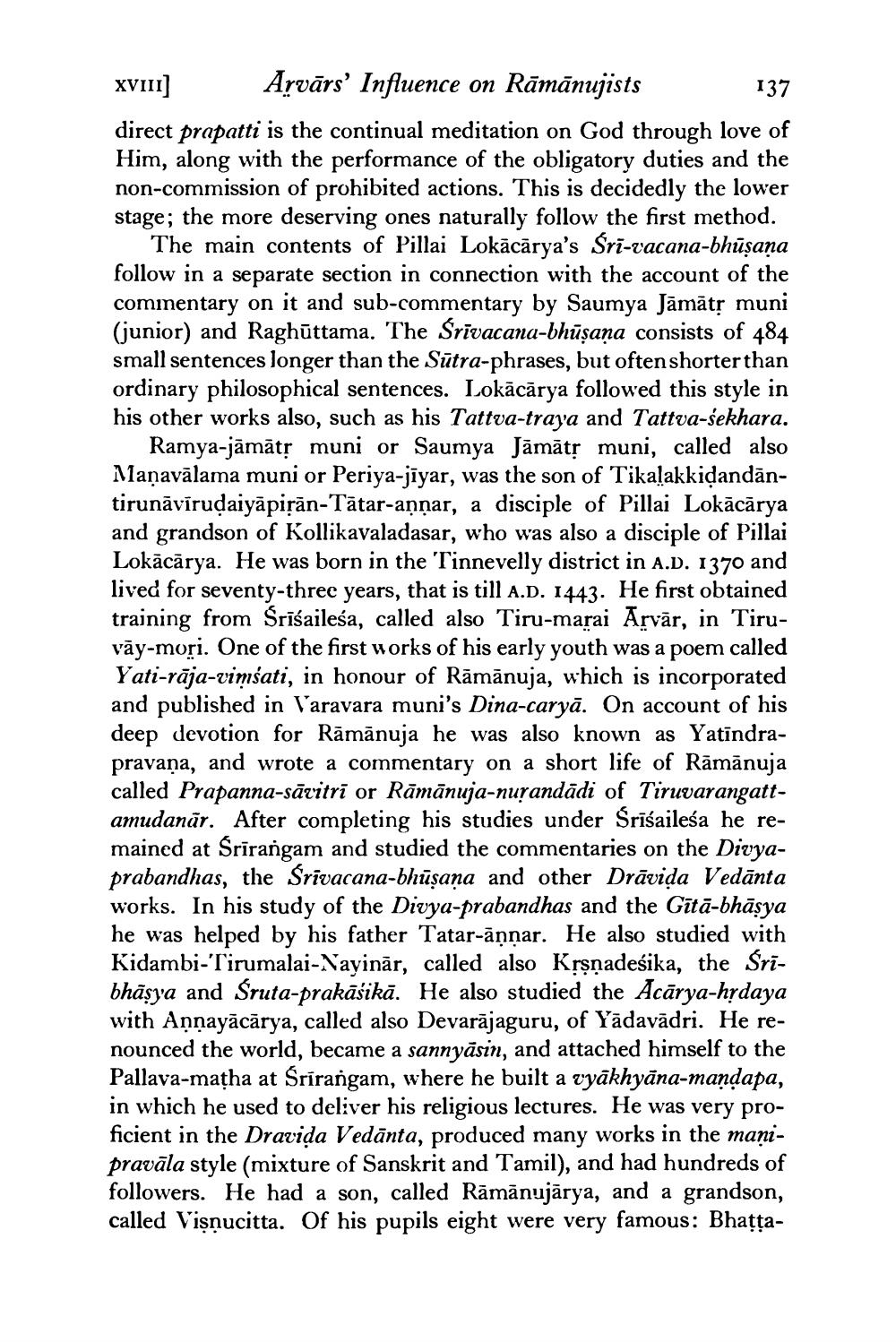________________
XV111] Arvārs' Influence on Rāmānujists
137 direct prapatti is the continual meditation on God through love of Him, along with the performance of the obligatory duties and the non-commission of prohibited actions. This is decidedly the lower stage; the more deserving ones naturally follow the first method.
The main contents of Pillai Lokācārya's Śrī-vacana-bhūsaņa follow in a separate section in connection with the account of the commentary on it and sub-commentary by Saumya Jāmātņ muni (junior) and Raghūttama. The Śrīvacana-bhūṣaṇa consists of 484 small sentences longer than the Sūtra-phrases, but often shorter than ordinary philosophical sentences. Lokācārya followed this style in his other works also, such as his Tattva-traya and Tattva-sekhara.
Ramya-jāmāts muni or Saumya Jāmāts muni, called also Maņavālama muni or Periya-jīyar, was the son of Tika!akkidandāntirunāvīruļaiyāpiņān-Tātar-annar, a disciple of Pillai Lokācārya and grandson of Kollikavaladasar, who was also a disciple of Pillai Lokācārya. He was born in the 'Tinnevelly district in A.D. 1370 and lived for seventy-three years, that is till A.D. 1443. He first obtained training from Srīśaileśa, called also Tiru-marai Arvār, in Tiruvāy-mori. One of the first works of his early youth was a poem called Yati-rāja-vimsati, in honour of Rāmānuja, which is incorporated and published in Varavara muni's Dina-caryā. On account of his deep devotion for Rāmānuja he was also known as Yatindrapravana, and wrote a commentary on a short life of Rāmānuja called Prapanna-sāxitrī or Rāmānuja-nurandādi of Tiruvarangattamudanar. After completing his studies under Srīšaileśa he remained at Srīrangam and studied the commentaries on the Divyaprabandhas, the Srivacana-bhūsaņa and other Drāvida Vedānta works. In his study of the Divya-prabandhas and the Gītā-bhāsya he was helped by his father Tatar-āņnar. He also studied with Kidambi-Tirumalai-Nayinār, called also Krsnadeśika, the Śribhâsya and Sruta-prakāśikā. He also studied the Acārya-hrdaya with Annayācārya, called also Devarājaguru, of Yadavādri. He renounced the world, became a sannyāsin, and attached himself to the Pallava-matha at Srirangam, where he built a ryākhyāna-mandapa, in which he used to deliver his religious lectures. He was very proficient in the Dravida Vedānta, produced many works in the maņipravāla style (mixture of Sanskrit and Tamil), and had hundreds of followers. He had a son, called Rāmānujārya, and a grandson, called Visnucitta. Of his pupils eight were very famous: Bhatta




